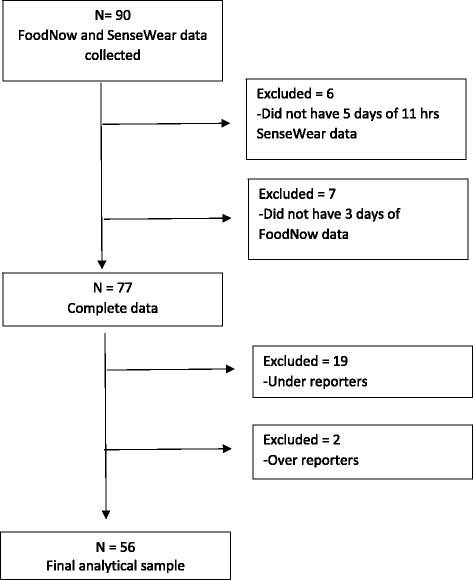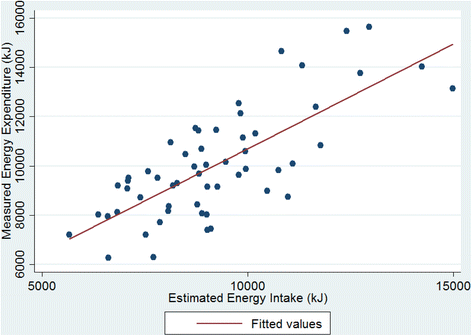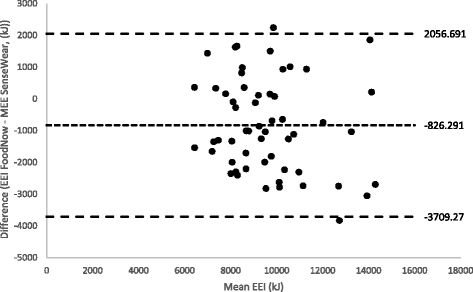Evaluation of a smartphone food diary application using objectively measured energy expenditure
- PMID: 28288657
- PMCID: PMC5348892
- DOI: 10.1186/s12966-017-0488-9
Evaluation of a smartphone food diary application using objectively measured energy expenditure
Abstract
Background: Dietary assessment methods are limited in their ability to adequately measure food and beverage consumption. Smartphone applications may provide a novel method of dietary assessment to capture real-time food intake and the contextual factors surrounding eating occasions. The aim of this study is to evaluate the capability of a Smartphone meal diary app ("FoodNow") to measure food intake using a validated objective method for assessing energy expenditure among young adults.
Methods: Participants (18-30 years) used FoodNow over four non-consecutive days recording all eating occasions through a combination of written text, and/or optional images and voice recordings. A series of contextual questions were also completed. Participants wore the validated SenseWear Armband (BodyMedia Inc, USA) during the same period to measure free-living energy expenditure. Intra-class correlation coefficients (ICC) estimated the reliability of FoodNow to measure estimated energy intake compared to measured energy expenditure.
Results: Ninety participants (71 female, 19 male; mean age = 24.9 ± 4.1 years) were recruited to use the FoodNow app to record their eating occasions. Thirteen were excluded as they did not meet minimum requirements for number of reporting days (n = 3) or SenseWear Armband wear time (5 days of 11 h), while 21 participants were excluded after being identified as mis-reporters (Huang method). Among the remaining sample (n = 56), reliability between estimated energy intake and measured energy expenditure was high (ICC, 95% CI: 0.75, 0.61-0.84).
Conclusions: FoodNow is a suitable method for capturing estimated energy intake data from young adults. Despite wide levels of agreement at the individual level (-3709 kJ to 2056 kJ), at the group level, FoodNow appears to have potential as a dietary assessment tool. This new dietary assessment method will offer an alternative and novel method of dietary assessment which is capable of collecting both estimated energy intake and contextual factors surrounding eating occasions. Information collected may be used to inform future public health messages or research interventions.
Keywords: Dietary assessment; Energy intake; Evaluation; SenseWear armband; Smartphone applications.
Figures



References
-
- Willett W. Nutritional epidemiology. New York: Oxford University Press; 2012.
-
- Nelson M, Bingham SA. Assessment of food consumption and nutrient intake. In: Margetts BM, Nelson M, editors. Design concepts in nutritional epidemiology. New York: Oxford University Press; 1997. pp. 123–69.
Publication types
MeSH terms
LinkOut - more resources
Full Text Sources
Other Literature Sources

